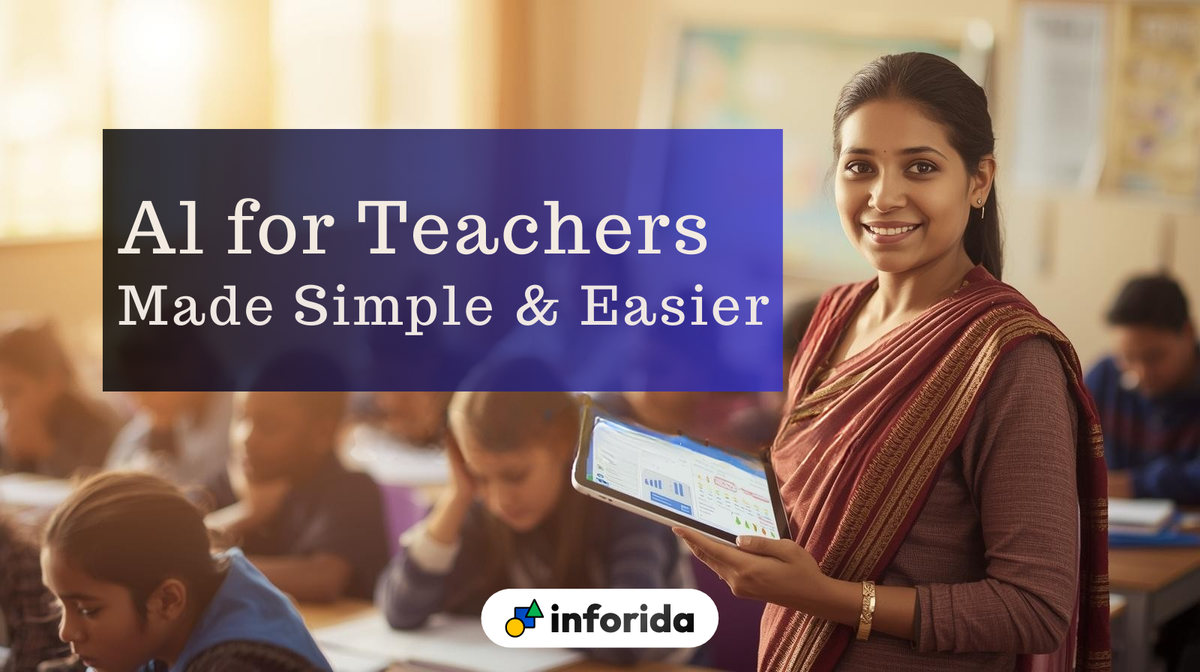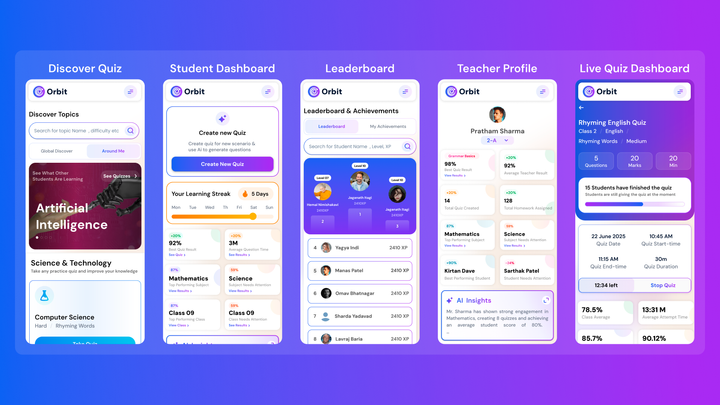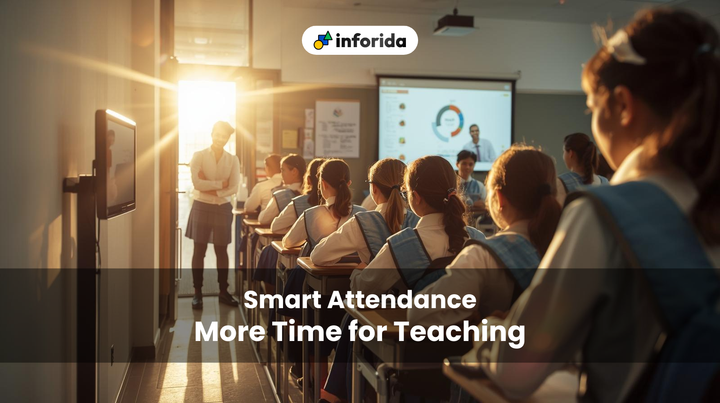AI for Teachers: How a $23M Fund Meets the Everyday Classroom
OpenAI, Microsoft, and Anthropic launched a $23M fund to upskill 400,000 teachers. Inforida makes AI usable in classrooms with simple tools for attendance, quizzes, and communication-helping teachers save time and focus on students.

In August 2025, OpenAI, Microsoft, and Anthropic announced something that caught the education world’s attention: a $23 million fund to help 400,000 K-12 teachers learn how to use AI tools (CNN via Walton Foundation, 2025). Big news, yes, but it also points to something deeper. If teachers aren’t comfortable with AI, students won’t really benefit from it. Teachers are the ones who decide if a new tool becomes part of the school day or just another app that never gets opened.
The focus of this move is to give educators training to create AI-powered lessons, assessments, and personalized student support.
Surveys show this shift is already happening. A Gallup study found that more than 60% of teachers used AI tools in the last academic year, and many said it saved them almost six hours a week (Gallup, 2025). But adoption depends on teachers, not just tech. If AI tools feel complicated or time-wasting, they won’t stick.
But training is only part of the puzzle. The real question is: once a teacher learns the basics of AI, how easy is it to actually use in the middle of a busy school day? That’s where design matters.
For India, this matters deeply. OpenAI recently pledged ₹4.5 crore to IIT-Madras and distributed 5 lakh free ChatGPT licenses to students (Times of India, 2025). This global momentum shows how AI is moving from hype to classroom practice.
Making AI practical in Indian classrooms
In India, where schools often juggle limited resources, teachers don’t need another complex dashboard. They need tools that slide into their daily rhythm. That’s what Inforida is building: an ERP system where the technology doesn’t sit on the side, it sits inside the workflow.
Take attendance. Most teachers lose at least ten minutes a day calling names. With Goood Morning, attendance is a tap on a phone or a glance at a biometric scanner. Parents get instant absentee alerts, reports update automatically, and the teacher starts class without wasting time.
Or lesson prep. Instead of juggling WhatsApp PDFs, pen drives, and last year’s notes, everything lives in a Digital Classroom Vault. Upload it once, share it with colleagues, and access it even when the internet cuts out.
Where AI really shines: assessments
If there’s one area where AI feels like magic, it’s assessments. With Orbit AI, teachers type in a topic and within minutes they have a quiz, complete with MCQs and explanations. The teacher stays in control—they can edit, replace, or regenerate questions. Once published, Orbit grades everything automatically, shows who didn’t attempt, and gives feedback to every student.
One high school teacher we spoke to in Lucknow said it best:
“I stopped spending my Sundays marking answer sheets. Now I spend that time planning my next class.”
Beyond marks and homework
Inforida also covers the invisible but heavy parts of teaching: creating timetables without clashes, swapping schedules when someone’s absent, sending reminders to parents, and keeping track of how students are really performing across subjects.
The system doesn’t just show a grade. It highlights patterns: which students are slipping, which subjects are consistently weaker, and where intervention is needed. For teachers, that’s not just data—it’s peace of mind.
And communication, usually a headache of WhatsApp groups and lost notices, runs through Bird AI. Parents get homework updates, event reminders, and urgent alerts in one clean stream instead of noisy chats.
Inforida follows India’s data norms, with role-based access controls (RBAC), multi-level authentication, and audit trails (Nucleus AI, 2025). Biometric attendance requires consent and complies with privacy frameworks. Data is encrypted and stored securely.
Why this matters now
The $23M fund is a sign that the global education community is starting to invest in teachers, not just tools. But training alone won’t make AI stick. Teachers need software that respects their time, that doesn’t demand hours of setup or constant troubleshooting.
Inforida’s bet is simple: if AI is woven into everyday school operations—attendance, homework, communication—teachers will actually use it. And if teachers use it, students benefit.
Of course, using AI in schools isn’t just about speed. Parents worry about privacy, and rightly so. Inforida’s system follows India’s data norms with role-based access, encrypted storage, and audit trails. Biometric attendance is only used with consent, and data isn’t shared outside the system.
Closing thought
Big funds and global announcements make headlines. But the real change happens in small classrooms in Bhopal, Patna, or Guwahati, where a teacher saves ten minutes on attendance, gets a quiz graded instantly, or finally has time to focus on the student who’s been quietly slipping.
That’s how AI becomes more than a buzzword. That’s how it becomes usable.
FAQs
Q1. What is the $23M teacher AI upskilling fund?
It’s a joint initiative by OpenAI, Microsoft, and Anthropic to train 400,000 K–12 teachers worldwide on AI tools.
Q2. Why are teachers called the “adoption gatekeepers”?
Because unless teachers use and trust AI tools, students won’t benefit. Teacher adoption drives real impact.
Q3. How does Inforida help Indian teachers specifically?
By offering one integrated ERP app with attendance, quizzes, assignments, analytics, and communication in simple mobile-first workflows.
Q4. Is biometric attendance safe for students?
Yes, when done with consent. Inforida uses encrypted, role-based access and does not share biometric data externally.
Q5. Does Orbit AI replace teachers?
No. Orbit AI generates quiz questions quickly, but teachers can edit, replace, and control everything.
Q6. What devices work with Inforida?
Inforida runs on mobile, web, and tablets, so teachers can work anywhere.
Q7. How is AI making education more inclusive?
Features like text-to-speech, voice input, and adaptive quizzes make learning more accessible for students with different needs.




